Subscribe now to get the Ninja Gaiden 4 issue and a Phantom Blade Zero poster pack-in!
Suiting Up As A Virtual Reality Ghostbuster At Madam Tussauds In Times Square
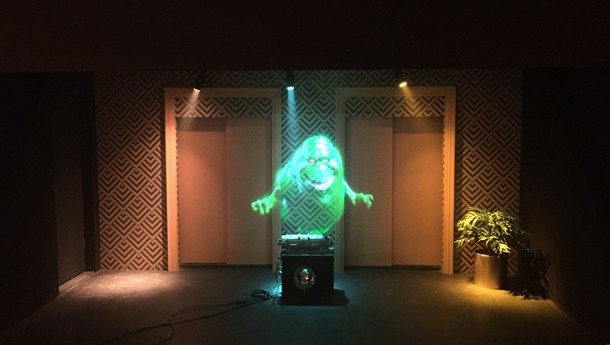
One of virtual reality's biggest challenges is getting people to try and enjoy the technology. While early adopters are eagerly bringing head-mounted displays home, that group represents a fraction of the potential audience. However, getting people to try an amusement park-style experience as part of a visit to a popular venue has huge potential to make believers out of average consumers.
On July 1, Madam Tussauds at Times Square in New York City will be opening its Ghostbusters Dimension experience to the general public. Visitors will be able to strap on a proton pack, hoist a particle thrower, and bust some ghosts. Sort of.
The Void, a company specializing in fully immersive, mobile VR experiences, has crafted a "hyper reality" attraction that uses custom hardware, including the Rapture backpack computer, haptic vest, head-mounted display, and gun to simulate busting ghosts. Once the visor on the HMD was lowered, I was transported into a virtual recreation of the prep room.
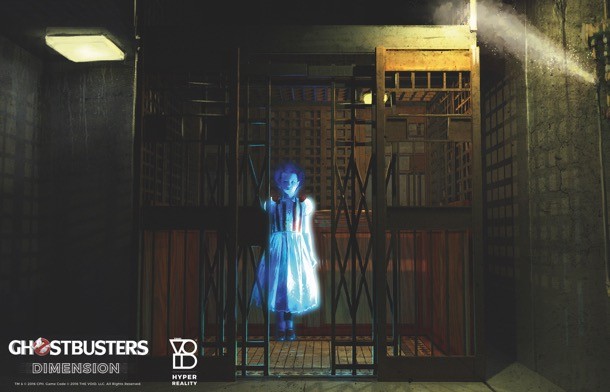
The experience had my team of three walking from room to room, as doors opened and walls blasted to pieces. To be clear, I don't mean we pushed a thumb stick on a game pad. The self-contained Rapture system allowed us to walk around an apartment, through doors, out onto a roof, and more.
Everything is rendered one-to-one. Every wall is perfectly mirrored in the real world, and we were encouraged to reach out and touch them. One of my teammates even sat in a chair placed in the apartment.
The first steps I took were disconcerting, but largely because we've been trained not to trust virtual environments lest we bump into our furniture. Once I touched the first door and another wall, I was able to give myself over to the illusion.
Ghostbusters Dimension makes use of some "4D" elements. Stepping onto a roof triggers fans that make it feel like wind is whipping past, an elevator rumbles and shakes as it carries passengers upward, and getting hit with ectoplasm from an angry ghost triggers directional haptics in the vest.
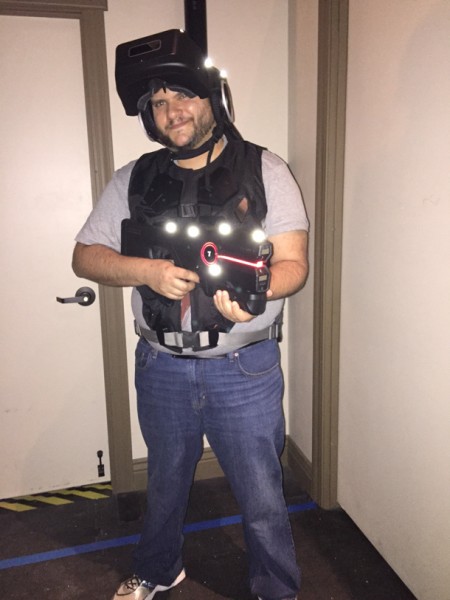
The Void's Rapture head-mounted display, vest, and gun.
The tracking on the Rapture gun was good for most of the experience. At the edges of the room, it tended to start acting erratically, but slightly moving fixed the problem.
There was a bit of stuttering when looking at the other people, and I’d love to see it improved, but it’s forgivable for how much fun the whole package is. The resolution and field of view don't seem quite as good as the home VR headsets (Rift, Vive, PSVR) available this year.
“Those are all kind of in the works,“ says The Void chief visionary officer James Jensen of the specific output specifications. “What we’ve noticed in what we’ve created with walking virtual reality and one-to-one matching is that you kind of look past that these things that you’re critical of when sitting in a seat. The screen-door stuff kind of disappears because you’re so immersed in the experience.”
My time as a Ghostbuster was a thrilling 15 minutes that I'd love to do again. But I'm more excited about what The Void has in store for the future.
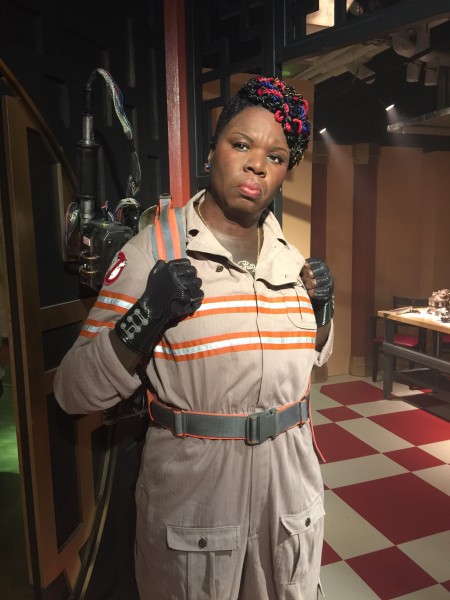
The company has larger experiences planned that offer visitors a chance to choose their paths through the environment. These are still a blend of scripted content and interactive moments, not quite a game as many of our readers think of them, but certainly not a virtual film.
“We have other stages called Dimension stages that are four times as big,” says The Void chief visionary officer James Jensen. “They allow you to have pathing options. You can go right, you can go left, you can break off from your team, you can go back to your team. The story method is kind of like a choose-your-own-adventure. That’s where you’ll really see the power of what we put together.”
As for Sony, the company sees virtual reality as a multi-channel technology. Sony’s newly appointed senior vice president of virtual reality Jake Zim says that there are different purposes for hardware like PlayStation VR and experiences like the company's team-up with the Void.
“The way we see virtual reality reaching the consumer is through a couple of different channels,” Zim says. “Location-based channels are a destination. You buy a ticket, you come to the city, you go through the experience. It’s limiting in one sense, but like those early arcades were, the first instance where people will get a chance to play game or do a VR experience until the technology gets to a point where people can bring it into the home. We see VR right now as deliverable on channels that exist in locations, at home (PlayStation VR is a great product), and mobile.”
Ultimately, what’s going to make VR compelling for creators is the ability to tell stories. There are challenges inherent in that, but storytellers have long adapted to new mediums.
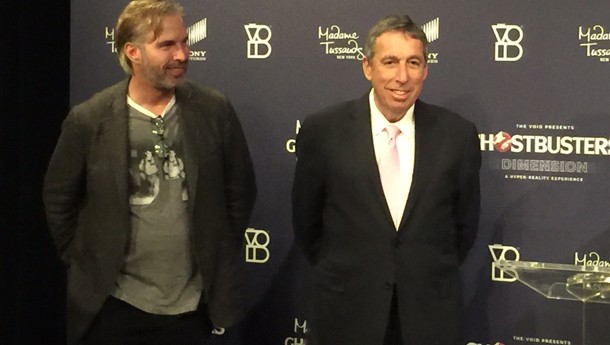
Ken Bretschneider, CEO of The Void (L) and original Ghostbusters director Ivan Retiman (R)
Famed director and producer Ivan Reitman, who was behind the camera for the original Ghostbusters films and is involved in the Ghostbusters Dimension experience sees both opportunity and challenge in virtual reality.
“It’s a little bit scary, because you have to really change the vocabulary,” Reitman says. “People will say it’s not meant for film or long-form or that it’s just a gimmick. I think that’s a very short-sighted approach. Just like there were many people who thought the advent of sound in film was hurting film, and for a minute it did. The sound techs said, ‘You can’t move the camera, and we have to have these huge blimp boxes all over the place.’ Movies started slowing down, and some of the worst movies ever made were in that first year.”
Despite the challenges, Reitman sees the potential for impactful storytelling that places the audience in the scene. He believes that filmmakers will need to adapt themselves to the intimacy of placing someone in private, emotional moments.
“What the storytellers have to learn is that there is a remarkable storytelling opportunity,” Reitman explains. “Storytelling started around a campfire, when a guy went off and hunted a buffalo. He told his friends all about it. With the advent of film, you could cut away to him fighting the buffalo and see what he experienced, but it’s still a proscenium event. With virtual reality, you’re experiencing the buffalo hunt. It’s way more complicated. Frankly, if it’s going to be done right, your character – and I don’t mean you’re actually a character with a name that people refer to – but somehow the fact that you’re at the center of it and are experiencing it in such a really tumultuous way, the opportunity is remarkable. It made me want to do it right away.”
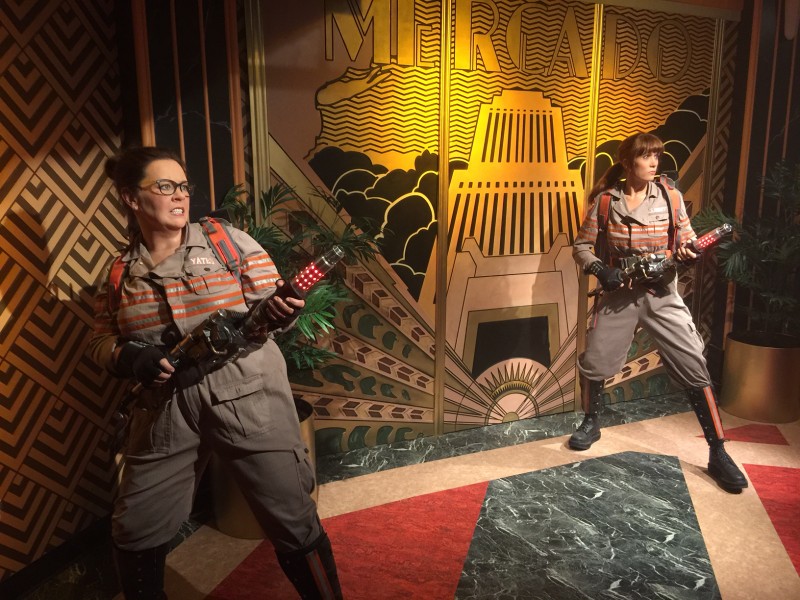
As for Sony, the Ghostbusters Dimension attraction is just the beginning. The company expects to evaluate future projects to receive similar treatment in parallel with the efforts of the PlayStation VR team working to bring content into the home.
“The first question we ask when consider green lighting a VR project is ‘What is going to make this VR worthy?’” Zim says. “We ask why the story has to be in VR. It’s a high barrier to entry to do VR. It’s a pain in the butt to put the goggles on or come to a location like this. The value of VR is that you are in the story. I think the opportunity in a narrative VR space is to bridge and collaborate with game design people who understand moving people through a story based on triggers, throttles, achievements, wins, and losses. Take all of that, distill it, and then get the creative minds of narrative people to come together and figure out how to make the character the audience, the gamer, the user. Let’s give them a story that really creates empathy with them and a level of activity that doesn’t overwhelm them. We’re not trying to create triple-A games. There are a ton of people doing that. We’re trying to create a storyline that changes somehow because you’re in it.”
The Ghostbusters Dimension “hyper reality” attraction opens alongside the Ghostbusters Experience only at Madam Tussauds in Times Square. The images above are a small glimpse of what you’ll find walking through different scenes from the upcoming Ghostbusters film, which opens on July 15.









